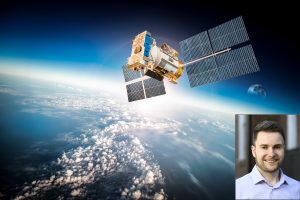Advancing space exploration, transportation, and aeronautics capabilities through improved technology is a national priority. Future expeditions to the moon, Mars, and deep space pose tremendous engineering challenges. Vehicles traveling through space must be capable of carrying sufficient payload to support human life and exploration in extraterrestrial environments. Every extra pound on a roundtrip mission to Mars is estimated to cost hundreds of thousands of dollars. Therefore, the vehicle mass must be optimized to minimize mass, while ensuring safety under uncertain extreme thermal, mechanical, and impact loads endured in space travel. Such designs require sophisticated computational models that can accurately predict structural performance of these vehicles under significant uncertainties.
Beyond the challenge of transporting humans into space, sustained human habitation on other planets will require a carefully designed infrastructure that makes use of highly constrained resources. Inhabitants of such hostile environments will require carefully planned communities to address all the basic requirements of food, water, air, medicine, energy, and shelter. The best solutions make use of local natural resources to the greatest possible extent. For example, agile manufacturing approaches could enable the use of nearby natural materials to “print” supplies on site, rather than undergoing the time and cost associated with shipping tools and parts.
Departmental faculty are developing much of the cutting-edge technology that will support such long-term exploration and inhabitation of space.
RESEARCH EXAMPLES
- Somnath Ghosh’s research is creating computational models for lightweight, failure-resistant metallic and composite structures used in a variety of space structures and space transportation. Funded by NASA, Air Force and various propulsion industries like Pratt & Whitney and GE, his research is creating novel computational predictive analysis and design models that will help develop realistic structure and material designs. A special focus is on developing failure and fatigue models that will enhance life of these structures.
- James Guest’s research focuses on generating new structural and material concepts that leverage new materials and manufacturing technologies to the fullest, enabling lightweight and multifunctional capabilities not yet realized in modern systems.
- Ben Schafer’s research focuses on extremely lightweight terrestrial structures – exactly the type of approach that will be critical in lower gravity environments with difficult mass transportation constraints.
- Stavros Gaitanaros’ research focuses on the mechanics of cellular materials under extreme conditions (high temperatures, high-velocity impacts) with the goal of developing lightweight multifunctional materials for space applications.
- Greg Falco‘s group is partnering with Space Force, AFRL and the Applied Physics Lab to work on solutions to conduct traffic in orbit while reducing hazards and collisions.
- Thomas Gernay’s research focuses on designing structures to better withstand the effects of temperature variation. This is of particular relevance in outer space, where materials and structures need to resist drastic temperature cycles in the absence of the Earth’s protective atmosphere.
- Michael Shields’ research exploring the influence of microstructural randomness, imperfections, and uncertainties on the properties of structural materials enables the design, optimization, and utilization of new materials, such as metallic glasses for advanced applications and under extreme conditions.
- Lori Graham-Brady’s research on the mechanical behavior of materials with random microstructure has been applied to composites, metal alloys, and advanced ceramics that serve as the primary materials in aerospace applications.
Header image courtesy of Skidmore, Owings & Merrill LLP. SOM is the architect, engineer, and master planner of Moon Village.


